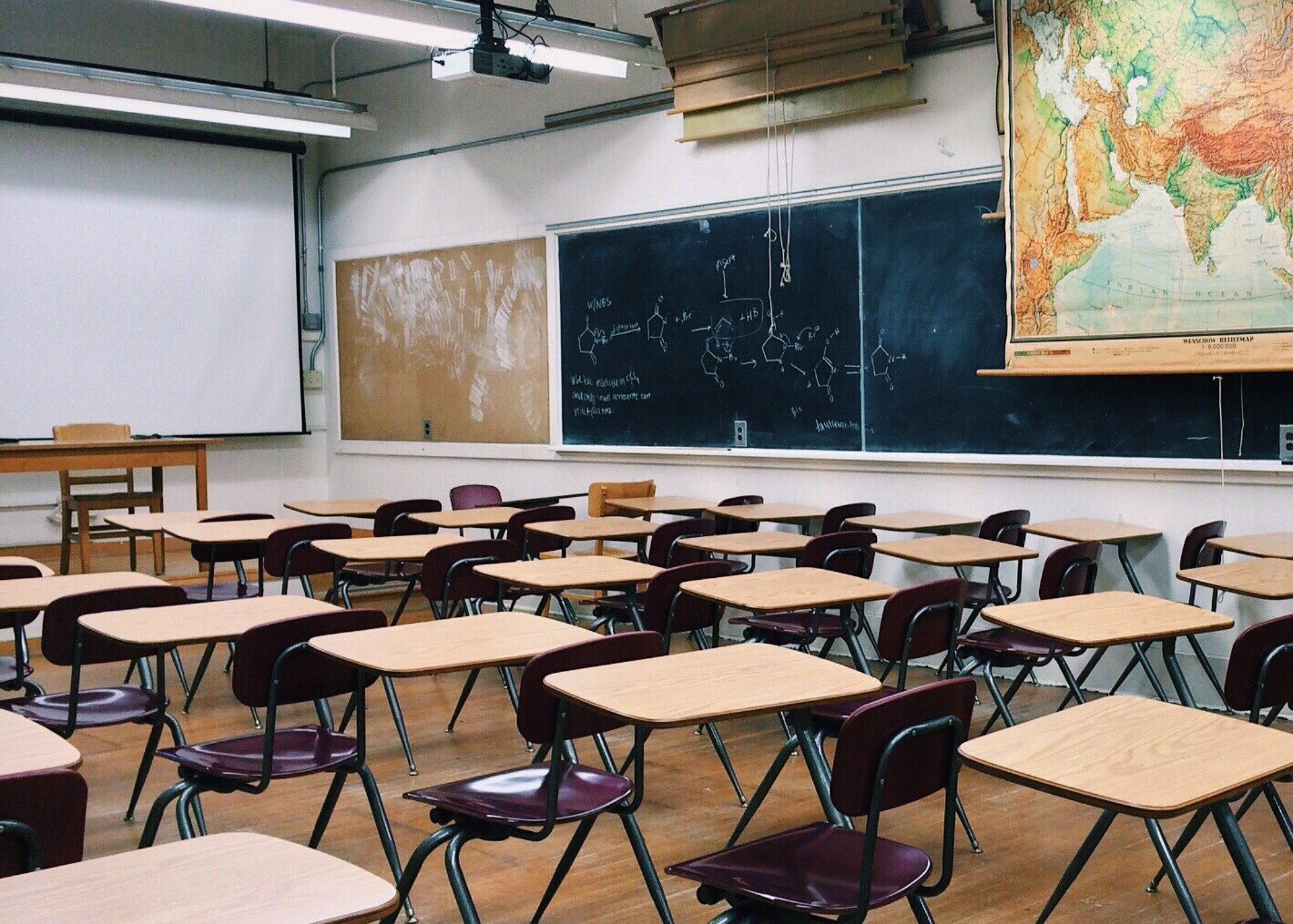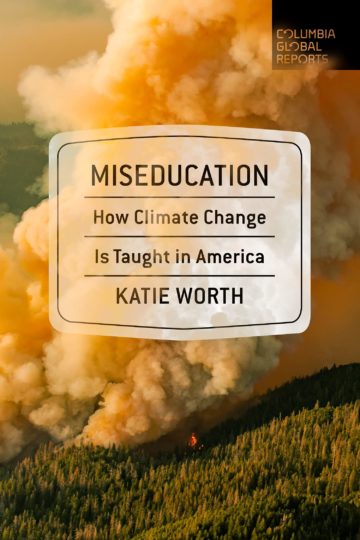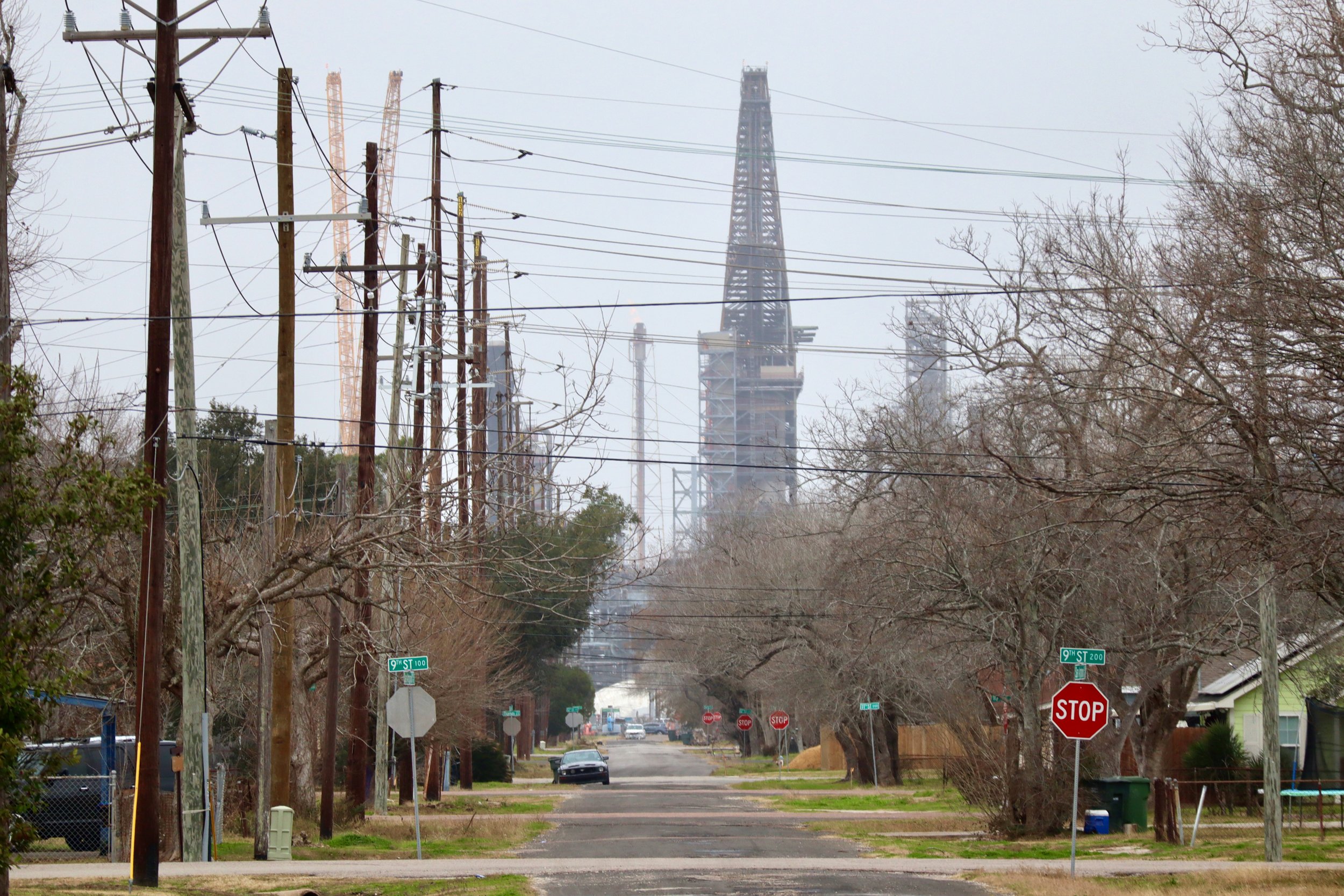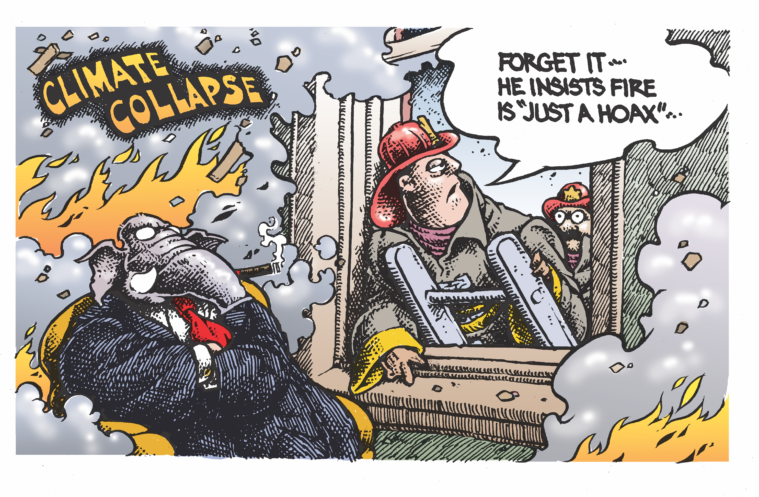
Texas Students Are Receiving a Miseducation on Climate Change
A new book by Katie Worth shows how conservative ideologues and fossil fuel money have crept into public-school curricula across the nation.

Last year, the state of Texas got a failing grade when it came to teaching public school students about climate change. A report by the National Center for Science Education and the Texas Freedom Network Education Fund found that the state’s current science education standards don’t meet key, basic criteria about climate education: Teaching students that climate change is real, that it’s caused by humans burning fossil fuels, and that the effects of climate change will be catastrophic.
But climate miseducation isn’t just a problem in Texas: From rural California to immigrant communities in Arkansas, school districts across the nation are beholden to conservative ideologues on school boards, fossil fuel money, and the political leanings of middle school science teachers. In a new book, Miseducation: How Climate Change is Taught in America, journalist Katie Worth chronicles how students in the U.S. are being misled when it comes to climate science.
Worth reviewed dozens of commonly used textbooks that introduce doubt about the scientific consensus on climate change. She sat in on dozens of science classes, including one where an energy lobbyist made a presentation about the industry’s benefits. She even reported from one of the most prominent climate denial conferences in the country, where lobbyists sent out thousands of industry-backed pamphlets to teachers across the nation. Worth spoke with the Texas Observer about what she found in Texas, how capitalism has influenced the way climate is taught, and how miseducation on climate is also an issue of equity.

Texas Observer: When it comes to how climate change is taught at the local level, statewide academic standards play a big role. Why is that?
Academic standards are the state’s main lever of control over a classroom. When it comes to science standards, lots of states have adopted a new approach called the Next Generation Science Standards (NGSS), which include [instruction on] climate change in middle school science. Other states have rejected that approach and stuck with their own standards. Some are actually better than the NGSS, but some are a lot worse.
People’s eyes tend to glaze over when I start talking about academic standards, because it’s an arcane bureaucratic thing. But surveys show that teachers pay attention to what’s in those standards. Also, if it’s in the standards—“You have to teach modern climate science to seventh grade kids”—then when parents complain, teachers can say, “‘Well, it’s in the standards. This is what I have to teach.” So it’s useful in communities that are very ideologically entrenched in denialism.
As you note in the book, this has created a system where textbook publishers have to cater to 50 different standards. There are actually different versions of the same book that talk about climate change differently. If you’re in Texas, you’re not reading the same book as you might be reading in Hawaii. Why is that an issue?
It becomes an equity issue. So there are two tiers of books—one that includes a robust and straightforward approach to climate science, and one that might include language like, “Many scientists point to humans causing climate change. Some scientists propose it is natural.” So everything is undermined by this doubtful language.
You basically have some textbooks sold to states with a more progressive view on what should be taught, and they are more accurate. And the others are sold to states with resistance to teaching on climate—sometimes that might be where publishers think there might be pushback. They’ll pitch this other textbook. Imagine if kids, depending on where they lived, were learning that the Earth was flat.
There’s another issue you bring up in the book, which is that there are also different ways that climate is written about for general education students and Advanced Placement students. Do you see that as an equity issue as well?
Yes. If you are taking an Advanced Placement environmental science class, you will learn about climate change because that’s mandated by [the College Board]. It’s going to be on the test. So there were two textbooks by Pearson, both high school earth science textbooks. They were by the same authors, published the same year. The general-ed version had two pages devoted to climate change and said, “What is causing climate change? Look at internet sources to find out.” But the advanced version was very straightforward and had 10 pages on climate science.
The effect is, you have the so-called smart kids—information about the future becomes the purview of these kids taking advanced classes. But for everyone else, the “rocks for jocks” version, they are taught to question climate change. When I say smart, I mean in the way that our systems divide kids who have a lot of support and the kids who are not as well-resourced. It’s not about intellect.
You quote a former assistant editor at McGraw Hill who says that there was never a “secret agenda” to push oil industry talking points, but rather a concern that “‘if we’re aggressive about [climate science], Texas isn’t going to buy the book.’” That raises the question of where the blame lies. Do you think that textbook publishers could take a different stand, instead of tiptoeing around it?
Publishers are doing business. They are contending with market forces and millions of dollars are on the line for them if a state rejects a textbook. So they preemptively put in this language that is vague and not truthful. It’s not because they don’t know what the truth is. It’s because they’re worried about selling books. The exact same thing happened when it came to evolution. It’s the organizing principle of biology, but for the better part of a century, it was absent from textbooks because publishers were worried about selling their books in the South. Clearly this is a problem of capitalism, and what companies are rewarded for under capitalism.
Is there room for more regulation in this space to make sure that all school districts have to teach climate science accurately?
There’s a long history of the federal government staying out of education. It’s the domain of state governments. And there’s a lot of resistance: Look what happened with Common Core. It was a national effort [to standardize K-12 educational goals], and it got turned into this huge fight over, “You can’t tell us what to do in our schools.” If the federal government insists on this, you would get a lot of backlash. But what people are doing is, state-by-state, paying attention to standards and pushing through standards that are more accurate and inclusive of climate change. Even in some conservative states, there’s been more success with that bottom-up approach.
Something that you talk about in the book is that socioeconomic factors can influence how climate is taught in schools. In a state like Texas, where there’s a huge variation, that might mean there’s corresponding variation in the way that climate science is taught. Why is that?
One thing we know is that better-resourced districts hold on to more experienced teachers than lower-resourced districts. Some of these issues that are tricky require expertise and confidence to tackle. So if you’re in a district that isn’t well resourced, you’re a new teacher and you have a feeling that this might be a controversial issue and you haven’t had much training yourself, you may decide to skirt climate change because you have so many other problems. But if you’re in a district where you have support, and you have time to plan and learn, and you have experience and confidence, you might get some pushback but you’re more likely to teach [the lesson on climate change].
Was there anything that surprised you as you were reporting this book?
I went to my own hometown, the far northern California town of Chico. It’s in the same county as Paradise, which you might remember burned to the ground in 2018. And I sat in a class with kids who had been displaced from that fire. And they were learning a lesson on climate science in seventh grade. Even those kids were raising their hands and saying, “My dad says climate change is a hoax.” It was really heartbreaking. These kids could be called climate refugees, but they are rejecting climate science. So that sits in my mind when I think about the scope and cost of this. Their whole lives were burned down in a fire that has climate change written all over it. And some of them are still being taught that it’s a phenomenon that doesn’t exist.
In my own reporting, I’ve met a lot of kids who are from conservative areas in Texas but who are very much taking on climate change as their cause. How does all of this balance out?
Kids are exposed to climate science far beyond what’s in class— with their families, on social media, in activist spaces. There are all sorts of places where they run into messaging, whether it’s true or untrue. But one reason I focus on public schools is that it’s an institution that touches almost every child’s life. So what are you going to walk away with at minimum when you enter adulthood?
We know that kids care more about climate change than their parents or grandparents. That said, a United Nations survey from this year found that 25 percent of kids aged 14 to 17 rejected the idea of a climate crisis. That’s a significant number, even if it’s not the majority. The problem is, if you have a bit of doubt, it inoculates against action. If you are wondering if this is true, then it’s hard to justify overhauling the economy. So if you get a portion of the population to think, “This isn’t a big deal, scientists are still undecided,” then you can protect against regulation and serious action. So what happens in schools is important, but it’s not the only important thing. Kids are super resourceful and have a lot of access to information.
This interview has been lightly edited for clarity and style.



